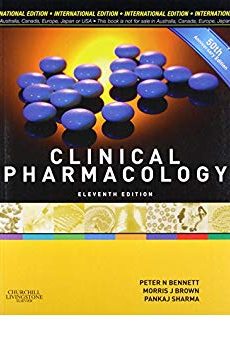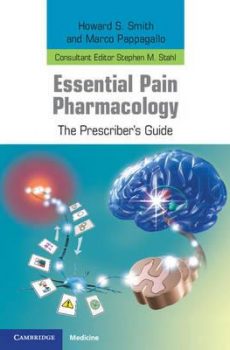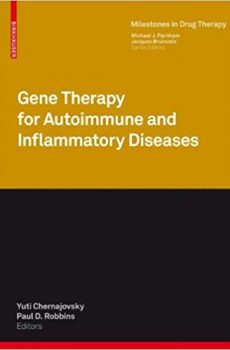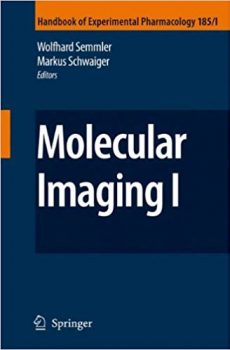
Clinical Pharmacology, International Edition
1,620.00₹ 1,060.00₹
A thorough knowledge of pharmacological and therapeutic principles is vital if drugs are to be used safely and effectively for increasingly informed patients. Those who clearly understand how drugs get into the body, how they produce their effects, what happens to them in the body, and how evidence of their therapeutic effect is assessed, will choose drugs more skilfully, and use them more safely and successfully than those who do not. Now in a fully revised 11th edition, Clinical Pharmacology is essential reading for undergraduate medical students, junior doctors and anyone concerned with evidence-based drug therapy.

Essential Pain Pharmacology
7,199.00₹ 3,490.00₹
Essential Pain Pharmacology: The Prescriber’s Guide expertly reviews the most important medications used to relieve pain, now considered by many physicians as the fifth vital sign. The catalogue of analgesics has expanded rapidly, and this text presents the most up-to-date, comprehensive array of agents available for prescribing. Each clear and concise drug entry covers the range of indications, advantages and disadvantages, and tips for appropriate dosing and avoiding adverse effects. A separate section covers nutraceuticals, a class of drug increasingly used to manage chronic pain, yet little discussed in medical literature. The detailed description of each medication enables the user to make quick and informed decisions, confident that they are best serving the needs of their patients. Practical ‘pearls’ for each entry provide a quick go-to reference for the key information to consider before prescribing. This concise user-friendly reference is a must-have on the shelf of every physician.

Gene Therapy for Autoimmune and Inflammatory Diseases
14,400.00₹ 8,900.00₹
In this monograph about gene therapy of autoimmune and inflammatory d- orders we have gathered international experts and leaders from different fields to review the state of the art advances on topics ranging from disease entities to vectors and engineered cells. The different approaches described in each chapter take into consideration the biomedical knowledge of these diseases and address the complexities of delivering long-term genetic interventions. Gene therapy also serves as a testing ground for new therapeutic entities and helps provide proof of principle for their potential therapeutic role in animal models of disease. Scaling up from mice to men still remains an important h- dle not only from the quantitative point of view, but also for currently unknown and unexpected secondary effects of the vector or the transgene. Some of these approaches have already been tested in the clinic, but much more needs to be done to understand the human conditions treated and the n- ural history of their pathology. We are indebted to the secretarial assistance of Ms. Lin Wells (Bone and Joint Research Unit, London, UK) and the help of Hans Detlef Klüber for his help in getting this book published. We hope this book will be of interest to c- nicians and scientists and inspiring to students of the subject who will use their own ingenuity and knowledge to further forward this discipline into clinical use.

Katzung & Trevor’s Pharmacology Examination and Board Review
3,990.00₹ 2,295.00₹
From the authors of pharmacology’s #1 textbook, Katzung & Trevor’s Basic & Clinical Pharmacology, Twelfth Edition, this review delivers a clear, concise review of fundamental concepts backed by more than 1,000 review questions and answers. The chapter-based approach facilitates use with course notes or larger texts.
Outstanding learning aids include:
- Short discussion of the major concepts that underlie basic principles or specific drug groups
- Explanatory figures and tables
- Review questions followed by answers and explanations
- Drug trees in drug-oriented chapters that visually organize drug groups
- A list of high-yield terms and definitions you need to know
- Skill Keeper Questions that prompt you to review previous material to understand links between related topics
- A checklist of tasks you should be able to perform upon completion of a chapter
- Summary tables that list the important drugs and include key information about their mechanisms of action, effects, clinical uses, pharmacokinetics, drug interactions, and toxicities
- Two comprehensive 100-question examinations followed by the correct answers and rationales
- Valuable test-taking strategies for improving your test performance

Molecular Imaging I
31,920.00₹ 6,400.00₹
The aim of this textbook of molecular imaging is to provide an up to date review of this rapidly growing field and to discuss basic methodological aspects necessary for the interpretation of experimental and clinical results. Emphasis is placed on the interplay of imaging technology and probe development, since the physical properties of the imaging approach need to be closely linked with the biologic application of the probe (i.e. nanoparticles and microbubbles). Various chemical strategies are discussed and related to the biologic applications. Reporter-gene imaging is being addressed not only in experimental protocols, but also first clinical applications are discussed. Finally, strategies of imaging to characterize apoptosis and angiogenesis are described and discussed in the context of possible clinical translation.






